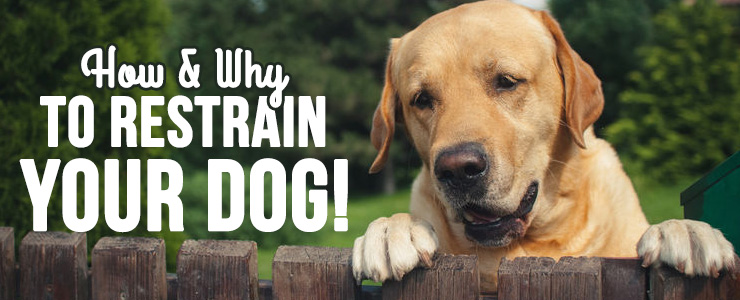
Looking at lions, tigers, ostriches and elephants in a zoo may be slightly upsetting. No matter how natural their environment looks, a kind-hearted onlooker might consider how much more happy the animal would be if he was free, ranging in the wild.
Unfortunately, that mindset is sometimes transferred onto domesticated animals, especially dogs. Some owners refuse to keep their pets within a fenced yard or enclosure, thinking that they would be much happier and more relaxed if they could simply run free. However, the changing world has brought more and more dangers to the canine community, and it is our job as pet owners to protect them.
Why Contain Your Dog: The Risks
Every day over 3,000 dogs die from being hit by a car in the United States. Every year 25% of all puppies less than a year old die from infectious diseases- some unpreventable, others completely preventable. It is extremely frustrating to fight to save your dog's life, only to find out that the cause was avoidable. One of the simplest, most effective ways to protect your dog from infectious diseases and car accidents is to contain him according to his needs and your lifestyle.
How to Contain Your Dog: The Fences
The simplest way to contain a dog is with a fence. Don't let videos and stories of the jumping-digging-squeezing escape artist dogs discourage you—those Houdini-like canines are the exceptions to the rule. What you can take away from those stories is an idea of exactly what kind of fence you will need for your pet and lifestyle.
The Privacy Fence
Also called the traditional fence, the privacy fence is the first fence that comes to mind when pet owners think of dog containment. Fences made more for general security are those such as aluminium fences with wide spaces between the bars. These are not the kinds of fences that you want if you have a dog. Even if the dog is so big he cannot fit between the bars, you would still have diggers and jumpers to worry about.
With a high privacy fence, it is much easier to keep the dog at home. There are only three problems: his digging and jumping capabilities and the gate. If the privacy fence is set deep enough in a concrete bed, there is no problem with diggers. Jumpers are another problem again, because they can use the fence itself as a launching point. It is advised to build a privacy fence at least 6 feet high at the outset, just in case.
Lastly, if your fence has already been digger- and jumper-proofed, you will still have to watch out for the gate. Some dogs just love to run straight through any opening they see. Having to hold your dog every time you leave, especially if the entire household is away during the day, can be both tiring and time-consuming. There is also the risk of losing hold while the fence is still open.
The Invisible Dog Fence
There are two kinds of invisible dog fences: wireless and in-ground. While choosing the right one for your pet depends on preference, each kind of fence has features that go better with different lifestyles. What link the two are their invisibility and their use of static correction.
All invisible dog fences work with a receiver collar, which communicates with whatever sets the boundary: the transmitter for wireless fences or the wire-and-transmitter for in-ground fences. With the best models, when the dog goes within a specific range of the boundary they receive a warning beep. When they step over the boundary itself, the static correction (think less static than socks-on-a-carpet) begins.
Wireless fences are the best containment systems when it comes to moving around. Because the unit consists only of a transmitter and receiver collar, it can easily be brought around wherever there is a power outlet. If you take road trips, go camping, or visit family during vacations then you can still easily keep your dog from running off or encountering possible poisons and diseases with this fence. Even at home, you can use the wireless fence to keep your dog away from visitors during a party but still leave him enough room to exercise.
If you are not planning to move anytime soon, or you want to reinforce your privacy fence, an in-ground fence might work better for you. It takes a little longer than the 2-hour set-up of your typical wireless fence; you will probably need a whole weekend, not to mention the time spent planning where to lay the wire (watch out for those water pipes). However, its advantage lies in the stability of the boundary it creates; because the wireless fence uses radio or wi-fi signals, the boundary line fluctuates several feet at a time whereas the in-ground fence harbors no such inconsistencies.
For any invisible dog fence, training is the most crucial part of ensuring its proper use. A dog cannot be tossed into the yard with the collar on and expected to figure out what is happening all by himself. At worst, your timid dog will refuse to leave the house, or your excitable dog will turn aggressive. Spend a few minutes every day teaching him to obey the warning beep, and even boundary fluctuation will stop being an issue.
Containment: Safety Is the Best Kind of Freedom
There is no purpose in allowing a dog to run freely if his risk of contracting diseases, getting poisoned, or being hit by a vehicle goes up. Especially for dogs who are loyal to a fault, it is much better for them to be kept close to home under your care and supervision.
